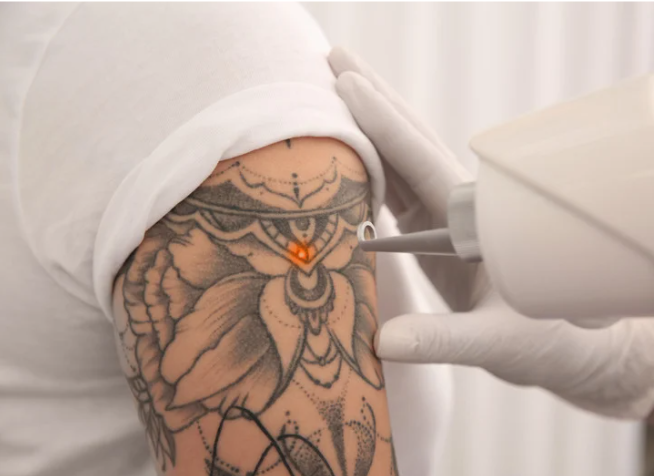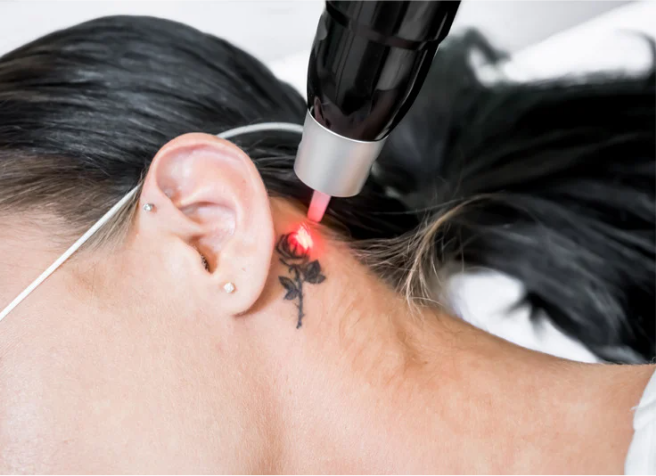
Laser Tattoo Removal: Safe, Fast & Effective Treatment for Clear Skin
Tattoos often hold deep personal meaning, but as time passes, those meanings can change. If you’re living with ink that no longer reflects who you are, Laser Tattoo Removal offers a safe, effective, and advanced solution. This non-invasive procedure uses state-of-the-art laser technology to gradually fade or eliminate unwanted tattoos, helping you achieve clear, natural-looking skin.
Whether you’re preparing for a career change, removing a past mistake, or making room for new body art, this treatment offers a reliable way to take back control of your skin.
What Is Laser Tattoo Removal and How Does It Work?
Laser Tattoo Removal is a medical aesthetic treatment that uses concentrated light energy to break down the ink pigments embedded in your skin. Each laser pulse targets the ink without damaging the surrounding tissue. The ink is then absorbed and eliminated by the body’s natural immune system over time.
HERE’S HOW THE PROCESS WORKS:
This process is repeated over several sessions, with the tattoo fading progressively after each treatment.
Why Choose Laser Tattoo Removal Over Other Methods?
Compared to older techniques, Laser Tattoo Removal stands out as the most advanced and skin-friendly method. Other methods like dermabrasion, chemical peels, or tattoo removal creams often damage the skin or yield poor results.

Benefits of Laser Tattoo Removal:
Non-invasive and safe – No cutting, burning, or chemicals involved.
Precise and targeted – Only the tattoo ink is affected, not the surrounding skin.
Minimal risk of scarring – Modern lasers are gentle yet powerful.
Works on all skin types – With the right technology and settings.

Is Laser Tattoo Removal Safe for Everyone?
Safety is a top priority in Laser Tattoo Removal. When performed by trained professionals, the treatment is generally very safe. Most people experience only mild side effects, such as temporary redness, swelling, or sensitivity in the treated area.
WHO SHOULD AVOID LASER TATTOO REMOVAL?
A pre-treatment consultation ensures that your skin is suitable and that any risks are properly assessed before starting the procedure.
What to Expect During a Laser Tattoo Removal Session
The idea of undergoing Laser Tattoo Removal can be intimidating if you’re unsure of what’s involved. But the treatment is quite straightforward.
Here’s what typically happens:
STEP 1
Consultation
A specialist will assess your tattoo, skin tone, and health history.
STEP 2
Preparation
A numbing cream may be applied to minimise discomfort.
STEP 3
Treatment
The laser is moved over the tattooed area, delivering short bursts of light.
STEP 4
Post-care
After the session, your skin may be covered with a soothing cream and a bandage.
Each session lasts between 10–30 minutes, depending on the tattoo’s size and complexity. Most patients can return to their normal routine immediately afterward.
How Many Sessions Are Needed for Complete Removal?
The number of sessions needed for full Laser Tattoo Removal varies from person to person. Some tattoos may fade significantly after just a few sessions, while others might require more.
FACTORS THAT AFFECT REMOVAL:
On average, people require 6 to 10 sessions, spaced about 6–8 weeks apart for optimal fading.
Does Laser Tattoo Removal Hurt?
Pain tolerance varies, but most people compare Laser Tattoo Removal to the sensation of a rubber band snapping against the skin. It’s uncomfortable, but manageable — especially with modern numbing creams and skin-cooling technology.
TO MINIMISE DISCOMFORT:
As your tattoo fades with each session, many people find the pain becomes less noticeable over time.
More FAQ
Are There Side Effects?
Most side effects from Laser Tattoo Removal are mild and temporary. Some of the most common reactions include:
- Redness and swelling in the treated area
- Minor blistering or scabbing
- Temporary skin darkening or lightening
- Mild itching as the skin heals
These effects usually resolve on their own within a few days to a week. Following your aftercare instructions is essential to ensure smooth healing and minimize any risk of infection or scarring.
Aftercare Tips for Faster Healing
Taking good care of your skin after Laser Tattoo Removal helps speed up the healing process and reduces side effects.
Key aftercare practices include:
- Keep the area clean and dry for the first 24 hours.
- Avoid sun exposure, saunas, or swimming pools for at least a week.
- Apply antibiotic ointments as directed.
- Don’t pick at scabs or blisters — let them heal naturally.
- Your provider will give you a detailed post-care guide tailored to your skin and treatment plan.
Conclusion: Is Laser Tattoo Removal Right for You?
Whether you want to completely erase your tattoo or just lighten it for a cover-up, Laser Tattoo Removal is the most advanced and effective solution available today. It provides a safe, customizable, and long-lasting way to reclaim your natural skin. With each session, you’ll get closer to a fresh start — one where your skin tells the story you want it to.
If you’re considering tattoo removal, always seek treatment from licensed professionals who use modern laser technology and follow strict safety standards. Your skin deserves the best — and Laser Tattoo Removal can deliver exactly that.
